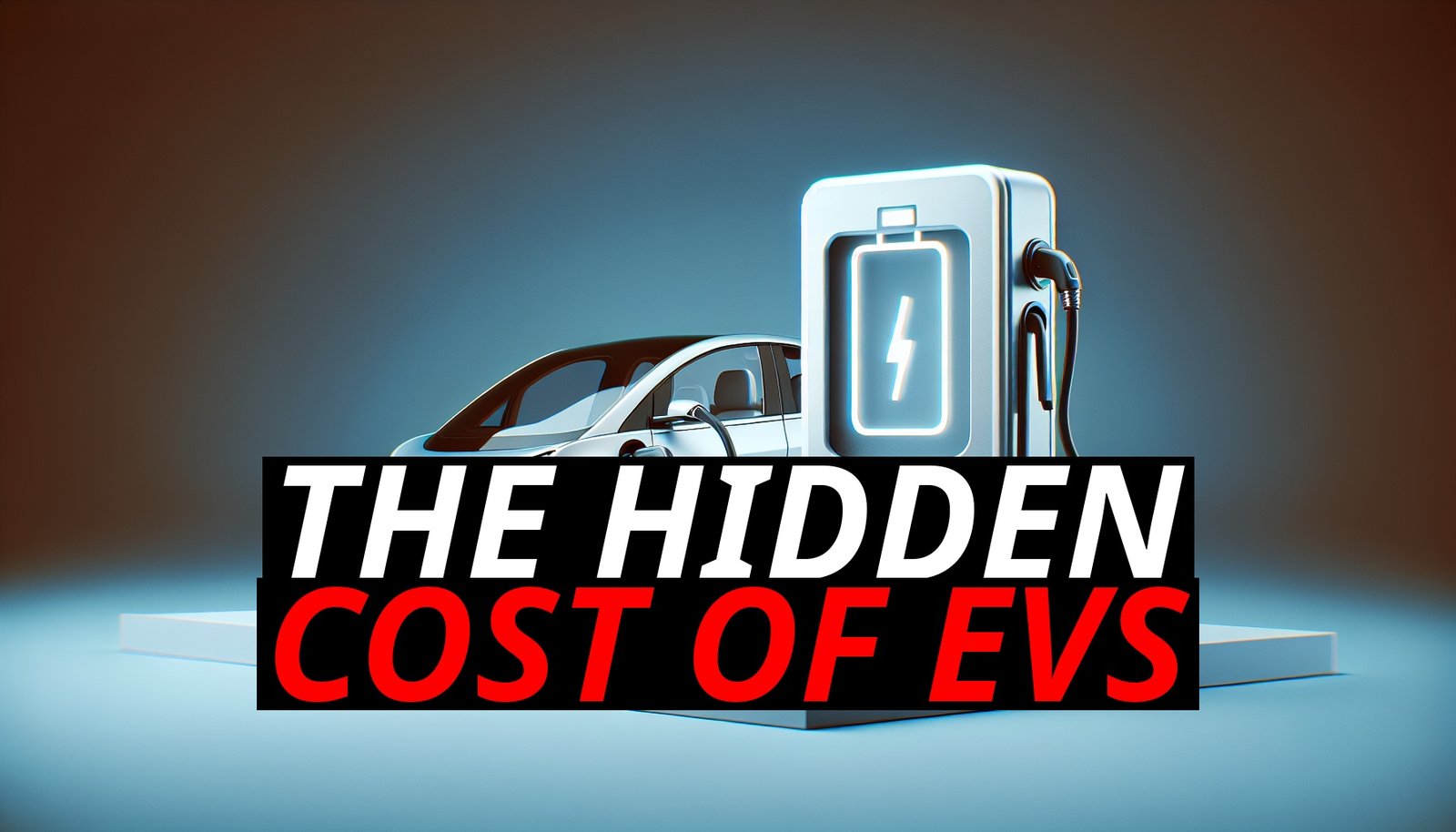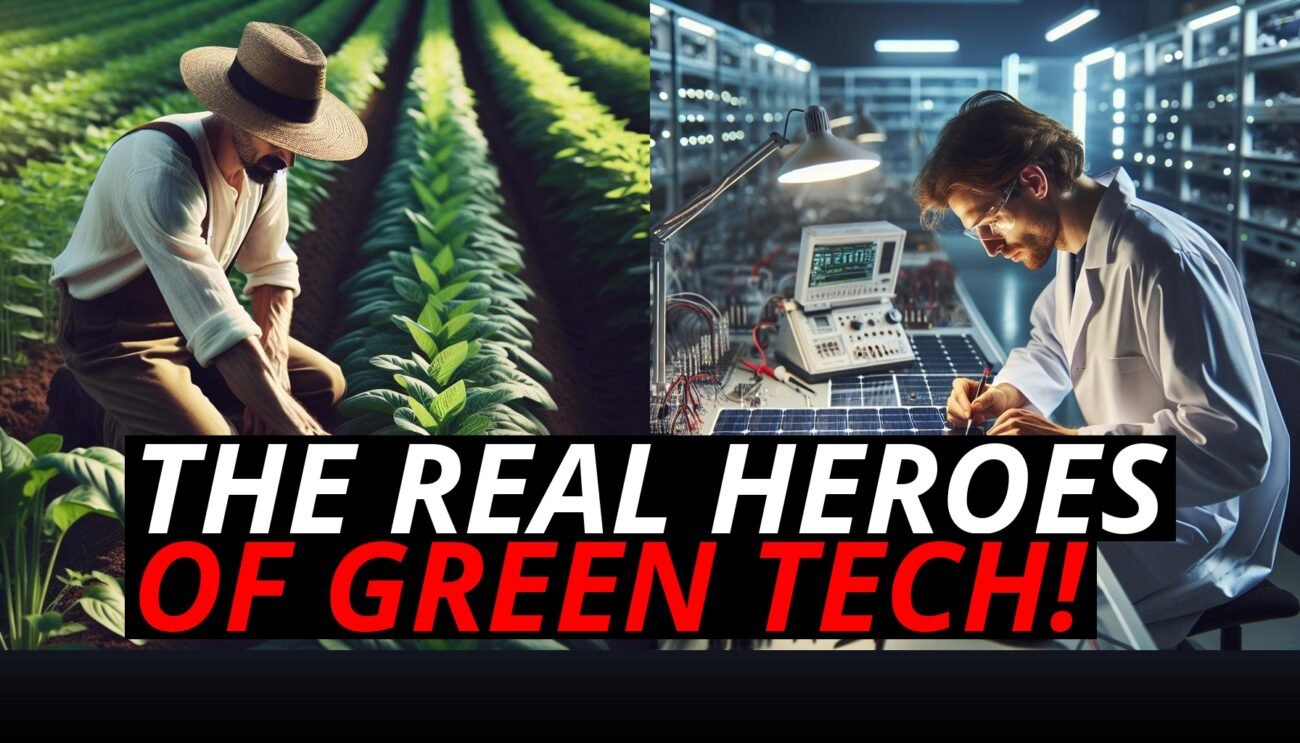Imagine driving a sleek electric vehicle (EV) down a quiet road, with zero emissions and the satisfaction of knowing you’re helping to save the planet. It’s the future that EV advocates promise—a world where we no longer depend on gasoline, where the air is cleaner, and where the environment thrives. But what if that electric car you’re driving isn’t as green as you think?
Beneath the surface of these “eco-friendly” vehicles lies a massive environmental cost that often gets ignored: the production of EV batteries. While EVs offer benefits in terms of tailpipe emissions, their batteries carry a hidden environmental price that many advocates overlook. Let’s dive into the unseen side of EVs and why battery production isn’t as green as it’s made out to be.
The Materials Behind Ev Batteries: Where They Come From
Electric vehicles run on lithium-ion batteries, which power everything from the Tesla in your neighbor’s driveway to the smartphone in your pocket. While the technology is impressive, the materials required to make these batteries come from environmentally destructive mining practices.
Lithium Mining’s Environmental Toll: Lithium, a critical component of EV batteries, is primarily extracted from salt flats in countries like Chile, Argentina, and Australia. The mining process involves pumping massive amounts of water into the ground to create a brine that contains lithium. This method can drain local water sources, threatening the livelihoods of farmers and the ecosystems that rely on these water supplies. In some regions, lithium mining has led to water shortages, leaving behind dried-up landscapes and devastated communities.
Cobalt and Human Costs: Another key ingredient in EV batteries is cobalt, which is mostly mined in the Democratic Republic of Congo. Unfortunately, cobalt mining comes with severe human rights abuses, including the use of child labor. In addition to these ethical concerns, cobalt mining also leaves behind a significant environmental footprint, as the process requires the destruction of large tracts of land, contaminating the soil and water with toxic waste. While the focus remains on promoting EVs as a clean alternative to gasoline cars, these social and environmental costs are often ignored.
The High Carbon Footprint Of Battery Production
While EVs are praised for reducing emissions on the road, what many advocates overlook is the carbon footprint of producing the batteries that power them.
Energy-Intensive Manufacturing: The process of making a lithium-ion battery is highly energy-intensive. Mining, refining, and assembling the materials needed for these batteries requires vast amounts of energy, much of which is still derived from fossil fuels. In fact, studies have shown that the production of a single EV battery can generate as much carbon dioxide as driving a gasoline-powered car for several years. This means that the environmental benefits of switching to an EV can take years to offset the emissions created during the production of its battery.
Transporting Materials Across the Globe: Once the raw materials for batteries are mined, they often need to be shipped to different parts of the world for refinement and assembly. For instance, lithium may be mined in South America, refined in China, and assembled into batteries in Europe. This global supply chain adds to the carbon footprint of battery production, as these materials are transported across thousands of miles using ships and trucks that run on fossil fuels.
Battery Disposal: The Growing Problem Of Toxic Waste
The environmental cost of EV batteries doesn’t end once they’re installed in a car. When an EV battery reaches the end of its life, it poses a significant challenge: how to dispose of it.
Limited Recycling Options: Recycling EV batteries is a complex and expensive process. Unlike traditional car parts, lithium-ion batteries contain toxic materials that require specialized handling. Currently, there are limited facilities capable of recycling these batteries, and the process is still in its infancy. Without proper recycling infrastructure, many batteries are discarded in landfills, where they can leak toxic chemicals into the soil and water, creating long-term environmental hazards.
Battery Lifespan and Replacement: EV batteries typically last between 8 to 15 years before their performance starts to degrade. Once a battery reaches the end of its useful life, it either needs to be replaced (which can be extremely expensive) or disposed of. This constant need for new batteries creates a cycle of waste, as old batteries pile up and new ones are manufactured, contributing to the demand for more mining and more environmental destruction.
The Environmental Blind Spot: Why Ev Advocates Ignore These Costs
For many EV advocates, the narrative is simple: electric vehicles are the solution to our climate crisis. But this oversimplified view ignores the real environmental costs associated with producing, transporting, and disposing of EV batteries. So why do these advocates overlook these critical issues?
The Focus on Tailpipe Emissions: Much of the enthusiasm around EVs stems from their zero tailpipe emissions. Since electric cars don’t release CO2 while driving, they’re seen as an easy way to reduce air pollution and combat climate change. While this is true on a surface level, it fails to account for the emissions created during the production of the vehicle itself—especially the battery. By focusing solely on what happens when the car is on the road, EV advocates miss the bigger picture.
The Appeal of Green Technology: There’s a powerful narrative around green technology that makes electric vehicles seem like the ultimate solution. EVs are seen as modern, innovative, and eco-friendly, making them attractive to consumers and policymakers alike. But this appeal often comes at the cost of critical thinking. The environmental impact of how these vehicles are made and what happens to them when they’re no longer useful is frequently brushed aside in favor of the feel-good story of zero-emission driving.
The Path Forward: Addressing The Environmental Impact Of Ev Batteries
While electric vehicles have their place in the transition to cleaner energy, it’s crucial to address the hidden environmental costs of their batteries. So, what can be done to reduce the impact of EV battery production?
Investing in Battery Recycling Technology: One of the biggest challenges facing the EV industry is the lack of effective recycling options for batteries. Governments and companies need to invest in recycling infrastructure to ensure that old batteries can be repurposed and their materials reused, rather than ending up in landfills. Developing efficient recycling processes will reduce the demand for new mining and lower the overall environmental footprint of EV batteries.
Exploring Alternative Battery Technologies: While lithium-ion batteries are the standard for EVs today, there’s growing interest in developing alternative battery technologies that are less harmful to the environment. Research into solid-state batteries, for example, could lead to more efficient, longer-lasting batteries that require fewer raw materials. Continued innovation in this space is key to creating a truly sustainable electric vehicle industry.
Encouraging Sustainable Mining Practices: The environmental and social costs of mining the materials for EV batteries need to be addressed head-on. Encouraging sustainable mining practices that minimize environmental damage and protect the rights of workers is essential. This could involve stricter regulations, better oversight, and more investment in technologies that reduce the impact of mining on local communities and ecosystems.
Conclusion: Evs Aren’T A Perfect Solution—Yet
While electric vehicles offer a promising alternative to gasoline-powered cars, it’s important to recognize that they aren’t a perfect solution. The battery production process carries significant environmental costs, from destructive mining practices to high carbon emissions and complex disposal challenges. If we want to truly embrace EVs as part of the green revolution, we need to confront these hidden costs and invest in sustainable solutions that address the full lifecycle of EV batteries.
It’s time for EV advocates to look beyond the tailpipe and consider the bigger picture—because real environmental progress requires more than just cleaner driving. It demands a holistic approach that takes into account every step of the process, from mining to manufacturing to disposal. Only then can electric vehicles live up to their promise of being a truly green alternative.













